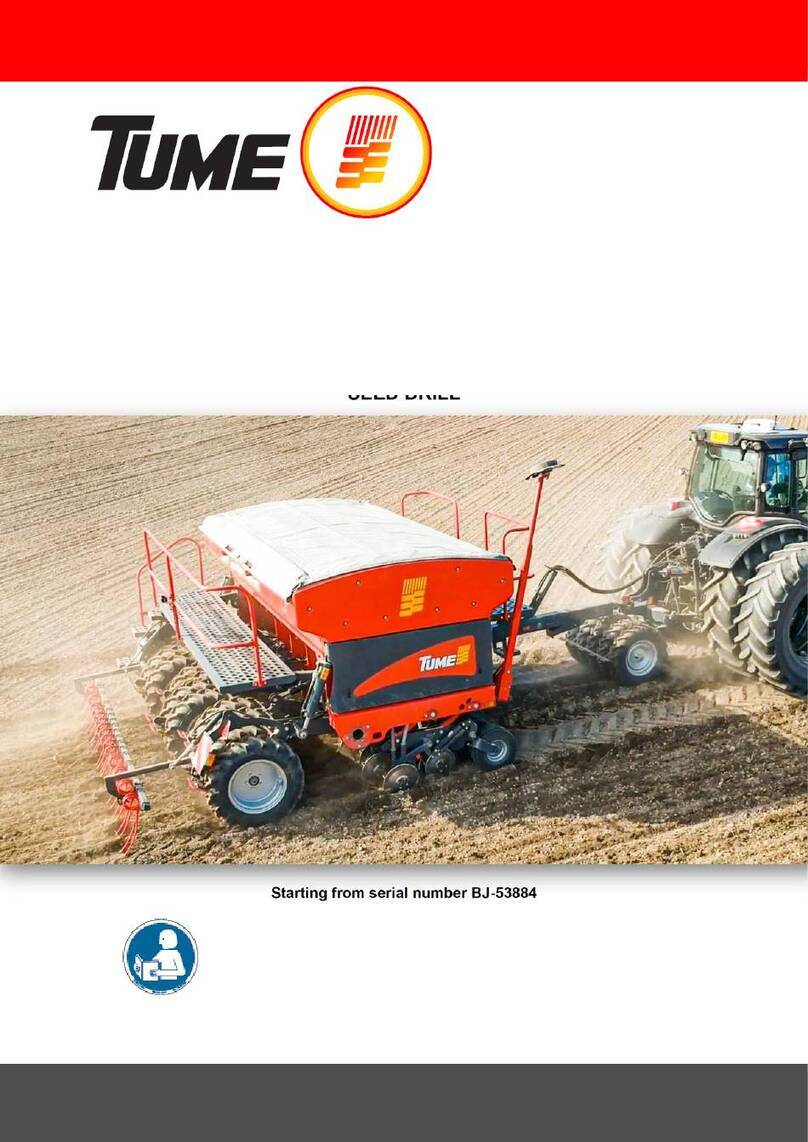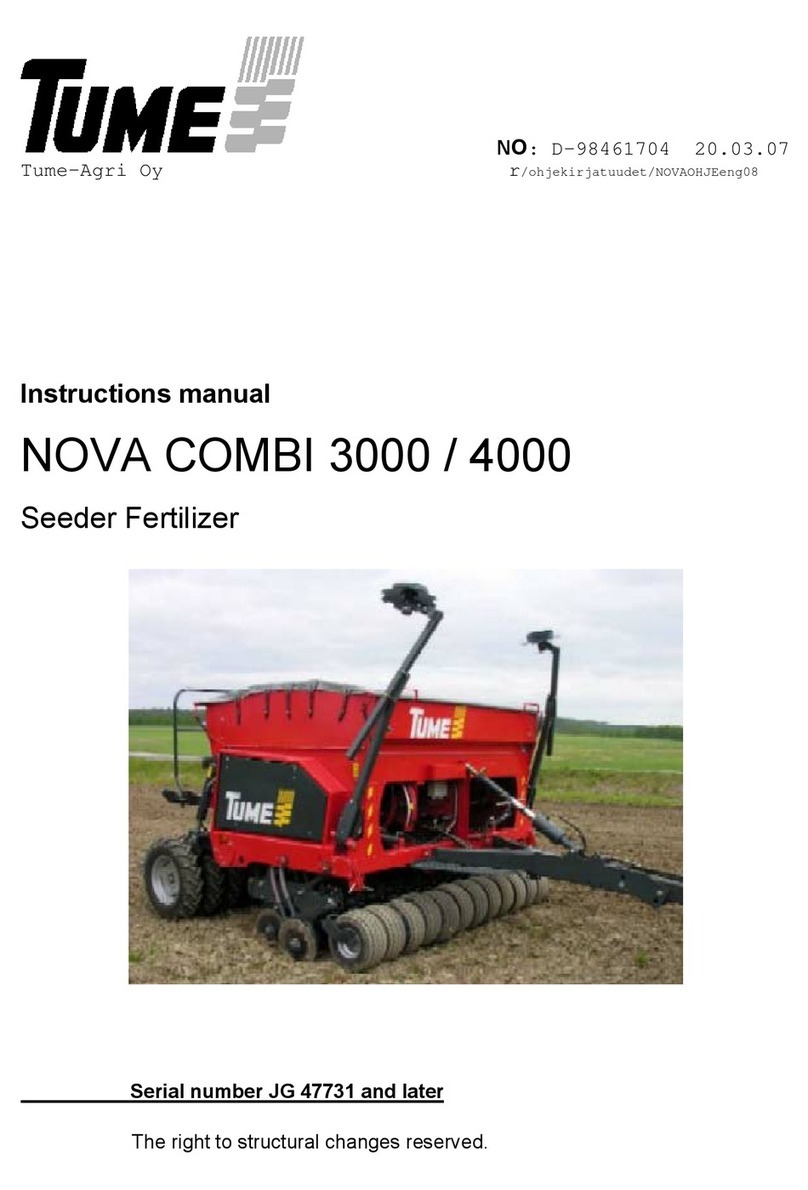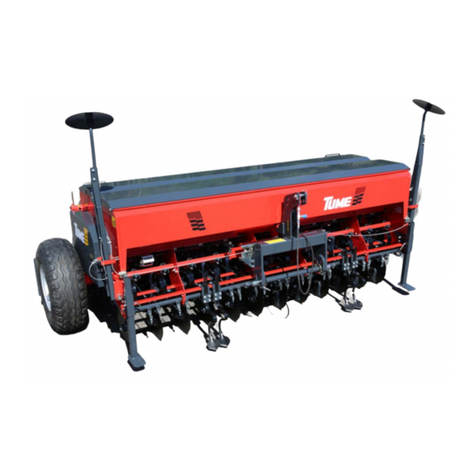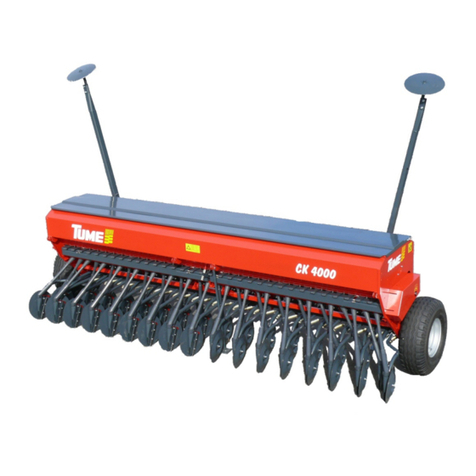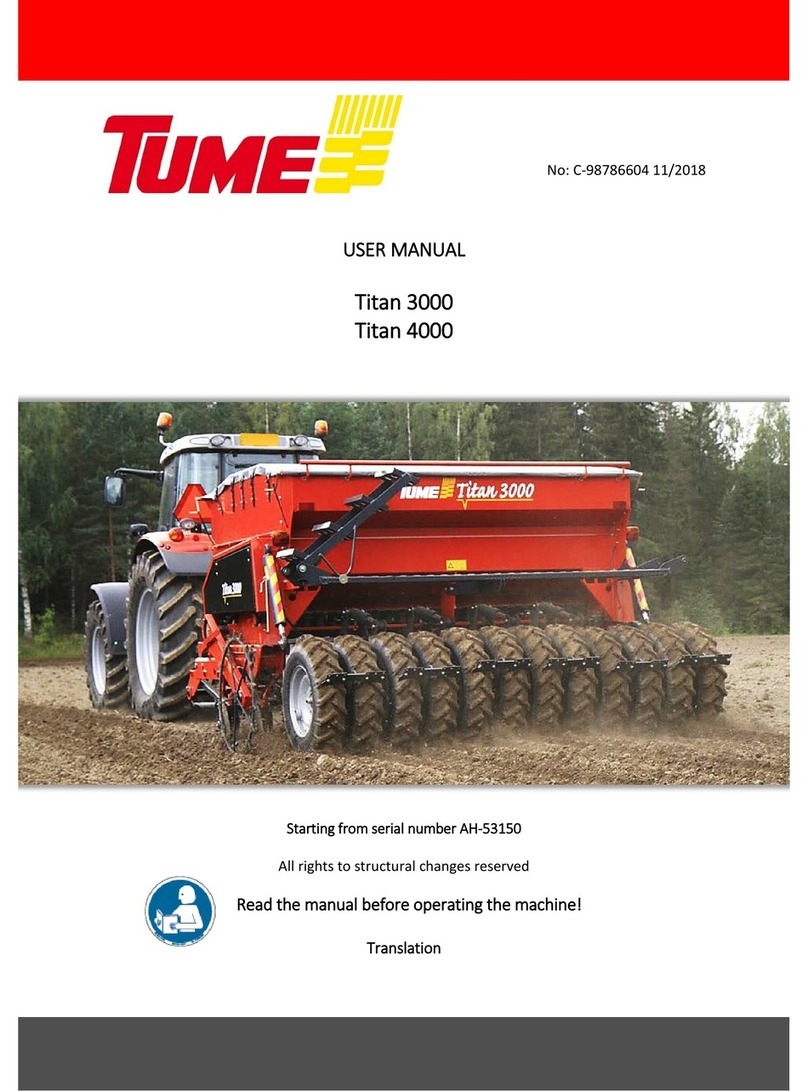
5
To avoid having to go between the cultivator and the tractor when hitching, we
recommend that the drawbars and push bar of the tractor should be equipped with
a quick hitch device.
Ensure that the cultivator is correctly and securely attached to the tractor. Use
only high-quality ring cotters. Ensure also that the hydraulics are correctly
connected.
Raise the support leg onlyafter the cultivator has been fully fastened to the tractor.
Observe extreme caution and ensure that the tractor engine is switched off when
going between the tractor and the cultivator unit.
It is strictly forbidden to go beneath the cultivator or cultivator parts while lifted
on the tractor’s lifter or whenever the unit is not mechanically supported.
Possible clogging of the coulter discs during work must be cleared to ensure that
the discs can be hydraulically raised from the ground without catching on the
cultivator. Before cleaning the discs, the tractor must be stopped and the engine
turned off.
Position the cultivator on a level surface if possible. If working on sloped terrain,
make sure that the machine cannot roll on its discs or wheels.
The cultivator’s support leg must be always used when the cultivator is unhitched
from the tractor. Before unhitching the cultivator from the tractor, first lower the
cultivator with the tractor’s lifter, then engage the tractor’s parking brake and turn
off the engine. Then go between the cultivator and the tractor and lower the
support leg. The support leg must be lowered before continuing to unhitch the
cultivator.
Whenever the cultivator is parked or is being serviced, repaired or adjusted,
ensure the safety of people working on or near the machine by making sure that
no other persons can access the tractor’s cab or its controls.
Standing or sitting on the cultivator, or carrying out adjustments or repairs while
the cultivator is in motion is strictly forbidden. The tractor engine must be turned
off during maintenance and repair work.
Before moving or operating the cultivator or adjusting the disc working height,
make sure that there are no people, buildings or objects within the danger area of
the machine.
All safety devices and guards must be kept in place during operation.
Damaged parts must be repaired or replaced immediately. Pay special attention to
the condition of the cultivator’s fertilizer seed drill draw pin and the unit’s own 3-
point hitch and hydraulic hoses.
Make sure that sufficient weight rests on the tractor’s front axle in all
circumstances to ensure that the steering functions safely. Normally, at least 20%
of the tractor’s total weight must rest permanently on the front axle. Use extra
weights if necessary.







